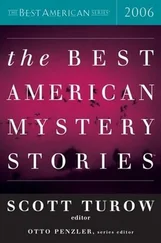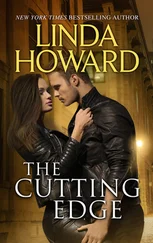A double-take. Then Sachs smiled. “Oh, no, not your kind of citation. Parking. I mean, you’ll be decorated. It’ll come from the commissioner himself.”
Her eyes lit up at this and it seemed that here was some kind of an inside joke about the NYPD commissioner of police that Sachs wasn’t getting.
The crime scene bus pulled up and Sachs rose — a bit stiffly.
She waved to the van and the driver, an Asian American evidence collection tech Sachs had worked with before, nodded to her and drove close.
“Oh, Detective?”
She turned to Romero.
“Had a little problem,” the traffic enforcement agent said.
“What’s that?”
“Only way to get the people’s attention? I had to knee a few cars. Get the alarms going.”
“That was smart.”
“I suppose. But I kicked this Lexus. And the owner, he’s not too happy about it. He’s going to sue me. He said personally. Should I get myself a lawyer? Can he do that?”
“Where is he?”
Romero pointed to a man in his thirties, in a business suit, cropped Wall Street hair and round glasses. His long face had a smirky, put-upon smile and he seemed to be delivering a condescending lecture to a patrol officer, stabbing a finger toward the uniform’s chest.
Amelia Sachs smiled. “Don’t worry. I’ll go have a talk with him.”
“Are you sure, Detective?”
“Oh, it’ll be my pleasure.”
Vimal Lahori was thinking that the old-time car he was riding in gave off a much more powerful scent of gasoline and exhaust and oil than modern vehicles. Of course, these aromas might have been due to the fact that it was being driven flat-out by a wild woman.
“You all right?” Detective Sachs asked him.
“I’m. Well. Yes.” He gripped the seat belt of the old-time car in one hand and the armrest in the other.
She smiled and slowed a bit.
“Force of habit,” she muttered.
After she had saved his life and shot that terrible man, the one who had killed Mr. Patel, Detective Sachs had told him that they’d found a phone on the body. It was suspicious. It had been used to call Russia after the Russian killer had died. Was there another person involved? She and Mr. Rhyme had not thought so, but better to be smart, so Vimal had stayed at the precinct house in Brooklyn until some computer expert at the NYPD found that the phone was a trick, to divert suspicion away from Andrew Krueger. Vimal was free to go and he had asked if Detective Sachs could drive him home.
She’d said she’d be delighted to.
She now made the turn and pulled up in front of the young man’s house in Queens. Even before he climbed out, the front door of the house flew open and his mother and Sunny were hurrying through the misty day toward him.
He said to the detective, “Can you wait here for a minute?”
“Sure.”
He met the family halfway up the walk and they embraced. The brothers awkwardly at first, then Vimal ruffled Sunny’s hair and they started pushing and wrestling, laughing hard.
“You aren’t hurt?” his mother asked, looking him over with the eye of a diagnostician.
“No, I’m fine.”
“Dude, another gunfight? You’re like dangerous to be around. It was on the news.”
No more than ten minutes after Detective Sachs had shot the killer, a dozen news vans had appeared, magically, at the dumping site.
Sunny said, “Kakima called — all the way from the NCR! You were on the news over there!”
The National Capital Region — New Delhi. Which meant tens of millions of people might’ve seen him.
Auntie was seventy-eight years old and spent more time online than any teenager Vimal knew.
His mother hugged him once more and walked to the maroon Ford. She bent down and spoke with Detective Sachs, undoubtedly thanking her for saving her son’s life.
Sunny was asking if he’d seen the man get shot. Then “Was it right in front of you?”
“Later, man. I’ve got to get something in the house.”
Vimal noticed the family car was gone. His father would be elsewhere. Thank goodness. He had no interest in seeing the man. Now. Or ever.
He walked inside and down to the studio. He noted that the bars had been replaced, which made sense, since this was New York City, and one could never have too much security. But the locks and hasps had been removed from the door, as had the fixture for the iron bar. The food and cartons of beverages were gone.
The studio was no longer Alcatraz.
Vimal walked to the closet and found what he sought, wrapped it in a sheet of newspaper. And returned to the front yard.
He told his mother and brother that he’d be inside in a moment and walked to the passenger side of the detective’s car and sat back in the passenger seat. “I’ve got something for you. And that man you work with, Mr. Rhyme.”
“Vimal. You don’t need to do that.”
“No. I want to. One of my sculptures.”
He unwrapped the object and set it on the dashboard. It was the four-sided pyramid he’d carved last year and been thinking of in the moments before he’d believed he was going to die. The piece was seven inches high and the base seven inches, as well. Sachs leaned forward and looked at it, then stroked the dark-green granite sides. “Smooth.”
“Yes. Smooth. And straight.”
“They are.”
Michelangelo believed you needed to master the basic inanimate shapes before you could render a living form in stone.
Vimal said, “It’s inspired by diamonds. Most diamonds are found in nature as octahedrons. Two pyramids joined at the base.”
She said, “Then they’re cleaved into two pieces for cutting. Usually for round brilliants.”
He laughed. “Ah, you’ve had quite the education about our business.” He too leaned forward and touched it with a finger. “It won first prize at a juried arts competition at Brooklyn last year, first at a competition in Manhattan and second in the New England Sculpting Show.”
Which, he reflected, his father had not allowed him to enter. A friend had entered it for him.
“First prize,” she said, clearly trying to sound impressed — while studying the mundane geometric shape.
Vimal said playfully, “Not bad for a paperweight, hm?”
Looking at him with a wry smile, Sachs said, “There’s more to it, I’ve got a feeling. Do I push a secret button and it opens up?”
“Not quite but you’re close. Look at the underside.”
She lifted the sculpture and turned it over. She gasped. Inside was a carved-out impression of a human heart — not a Hallmark card version but an anatomically correct heart, with exact reproductions of veins and arteries and chambers.
It had taken eighteen months to craft the piece, working with the smallest of tools. It was, you might say, a negative sculpture: the empty space, not the stone, was the organ.
How did I do, Signore Michelangelo di Lodovico Buonarroti Simoni?
“It’s called Hidden .
“Vimal, I don’t know what to say. It’s astonishing. Your talent...” She set it back on the dash then leaned forward and hugged him. His face burned with a blush and he awkwardly pressed his palms into her back.
Then he climbed out of the car and walked back to the house, where some, though not all, of his family waited.
At 9 p.m. Lincoln Rhyme decided: Time for a drink.
With an unsteady but determined hand, he poured several fingers of Glenmorangie scotch, the bourbon cask variety, into a Waterford glass, which contained a few drops of water. This, he believed, opened up the whisky.
The Waterford represented a victory for him. Though he’d never in his life been inclined to luxurious items like this, he’d been determined to graduate from unbreakable plastic tumblers — which he, as a quad, had used for years — to something elegant. Had his grip failed, $137 would have shattered on the floor.
Читать дальше
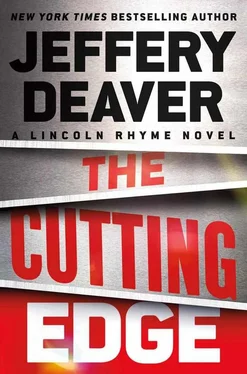

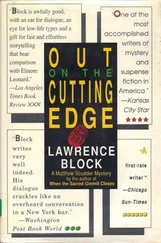



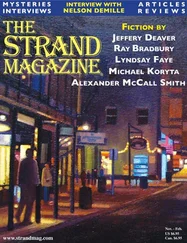
![Джеффри Дивер - Where the Evidence Lies [A Lincoln Rhyme Short Story]](/books/403782/dzheffri-diver-where-the-evidence-lies-a-lincoln-r-thumb.webp)
